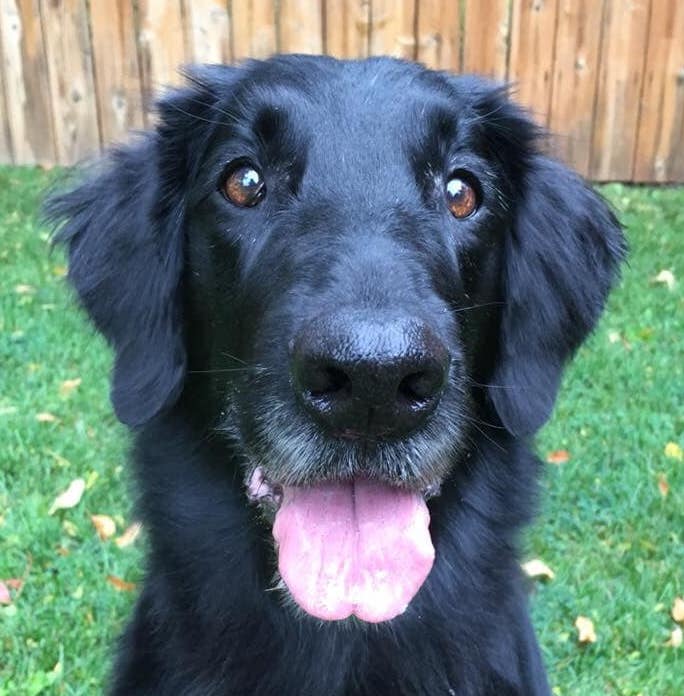
Last week, we talked about the safety of fences that contain dogs in yards. This week, we’ll talk about the safety of the dogs contained within those fences, including suggestions on supervision and tips on positive training that dog owners can use to prevent fence and yard problems before they arise.
I asked dog professionals on Facebook for their help:
▪ Should dogs in a safe fence always be supervised?
▪ What would “supervision” of those dogs look like?
▪ What are some alternatives to unsupervised dogs?
Christine Hale Vertucci (Illinois) Supervise, supervise, supervise! It prevents nuisance barking, fence fighting, digging; you don’t have dog waste in the yard because you can pick it up immediately; and [it discourages] others from tossing things into or entering your yard. Important behaviors to train: recall, leave it, drop it/out. I also regularly check the fence to make sure all gates are secured and that nothing has made its way into my yard that I don’t want my dogs ingesting.
Joyce Kesling (Florida) Nothing is 100%, but if something does go wrong—a dog escapes, for example—you might have a head start and/or know which yard they escaped to. If you’re not there, you’ve got no clue! I had a foster Jack Russell terrier dig under the fence, chasing a lizard, in seconds. It sure was helpful that I was there and knew which neighbors’ yard she went to. Who leaves dogs out loose all day so they become a barking nuisance? Not good neighbors!
Lynn Brezina (Illinois) Dogs should never be left alone in the yard for longer than 15 minutes. Puppies should never be left alone in the yard. Dogs develop guarding behaviors quickly. Puppies are easily frightened, so are at risk for developing territory aggression.
Misty Mills (Texas) A degree of supervision is always a good idea. Incidents separate from fence problems can still occur in outdoor spaces—birds of prey, snakes, insects, injuries like torn ACLs, dog fights, etc. While 100% supervision isn’t always practical for most pet families, an awareness of potential problems can help determine the level of supervision appropriate for each situation.
Cheri A. Moore (Washington) Right behind our back yard is a county park. My yard is fenced, but we learned quickly that we could never just let our dog out without supervision! That was true for our little shih tzu and for our big springer spaniel/red heeler mix. And even if our dogs stayed in the yard, there was no guarantee that the dogs in the park would stay in the park.
Margaret Tyler (Illinois) I have a chain-link fence. My dogs have never challenged fences, but I have had fosters that pretty much ignored the fence, doing impossible things to get out a gate. With the post set in concrete and the gate over a concrete sidewalk, a full-grown golden retriever squeezed out the bottom. That put him into another fenced area, but he came to the door anyway. My own two girls bark any time they see a person, and I know from the tone of the bark if it’s friend or stranger. I am not necessarily out with them, but I am close to the door. Their bark changed the other day, and I immediately stepped outside the door to find that a stranger, an older woman, had walked up my driveway to see them. Who does that? She was ten yards into private property.
Amy Sugars (Ohio) A key to a successful fence is not allowing the dog to spend too much time outside unattended so he doesn’t start trying out ways to escape the boredom.
Lauren Fetterman (California) It’s less about safe fences and more about our habits and being too permissive with our dogs, allowing over-arousal as a normal part of life with dogs. Having a safe fence is great, but dogs that run the fence line and practice barking at passers-by all day without any guidance from their owners are being set up to fail, in my opinion.
Eileen Anderson (Arkansas) Yes! The human behavior and intervention is at least as important as the fence.
Oona McGuinness-Fischer (Washington) I too often have noticed that new homeowners get a dog—because, hey, we can have one now, and look, we have a fence! They get a puppy, for a little while all is good, then they get tired of this responsibility. [They] quickly realize their poorly trained dog cannot be indoors alone while everyone is at work or school, so the poor dog becomes a noisy, sad back yard ornament. I saw this happen several times on our block over the years. Here’s the thing—no fence on earth controls barking or noise on either side. Dogs by nature are not meant to be alone and trapped in a space all day. They are [social] animals. So unless you are a dedicated, very loving, responsible dog owner . . . you probably should not have a dog! To train a dog is serious and it matters a lot! I would like to see it be required for people to attend a class before they can just “get a dog.” People need to realize that it is a major commitment.
Darcey Byrne (Washington) Fencing has its place. What is more critical in my opinion is the well-adjusted and educated animal owner. I am truly sick of the barking dogs of our city. The barks denote loneliness, territorial “protection” (this is not fair to a neighbor just going into their own yard), doggie doors that allow the animals outside, and, wait for it . . . dog owners who are oblivious to said situation.

Photo by Jill Gibbs — Izzy, Flat-coated Retriever
Jeanne Brennan (California) After fence style, the most important thing for owners to think about is fence-line running. Some people think it “looks like the dogs are having fun.” I also hear people say it’s just dogs getting exercise. What is it really? Dogs getting an adrenalin rush—an addictive adrenalin rush—that replaces boredom. Dogs that spend too much time on their own in back yards often resort to this behavior. If there is a dog on the other side of the fence also participating, it’s double trouble. So many animal-control calls come from fence-line runners breaking through fences or pulling other living things (usually other dogs) through the fence. It never ends well. I have suggestions to prevent fence-line running, and ways to reinforce the bottom areas of fences for dogs that may dig and pull fence-board bottoms off, as my border collie used to do. They involve chicken wire, weed block, mulch, or rounded gravel.
Sarah Adams (Oregon) The biggest thing, I think, is that dogs in the yard shouldn’t be barking and charging fences. If they’re doing that, you have a problem, and no type of fence construction is likely to be safe. The dog is reacting to things outside the fence, and they’re going to keep trying to get at those things. Having an interior barrier fence may help, but in any case, you need the dogs to not be doing that. It also isn’t fair to the people on the other side of the fence. It particularly disturbs me when the fence borders a sidewalk. When I lived in the city, it used to be a frustration to me that I’d be walking my dog down the sidewalk, and suddenly there’d be a dog a few inches away, separated only by a chain-link fence, trying to get at my dogs. If the dog doesn’t react to things outside the fence, most fences will contain them. I have a four-foot field fence on my half-acre lot. Mercy can stick her entire head through the fence gaps, and she does, when she wants to lick the neighbor kids. People do walk by the front of the property, sometimes with dogs, but my dogs don’t react to them, so they aren’t challenging the fence. Their only reaction to things outside the fence is when they want to schmooze with the neighbors, and that’s not an intense response, so it doesn’t cause them to challenge the fence. I do leave my dogs out unattended, but only when I’m home, and if I don’t see them for a bit, I’ll go call them. Dogs unattended in a yard do tend to get bored and act more territorial.
Leslie McGavin Clifton (Florida) [Q. Can having more than one dog make “outdoor” issues like fence-running and fighting, barking, digging, worse?] I think, yes—absolutely. One dog over threshold will spur another dog along. You could end up with redirected aggression. That sort of activity for dogs is highly self-reinforcing, with high levels of adrenaline.
Michael Curran (Texas) I see multiple dogs feed into each other and act as a catalyst to reactivity. I often see redirected aggression that can lead to inter-household aggression. For serious barrier frustration and fence-fighters, I recommend a buffer zone. Set up a second horse-wire fence three feet from the existing fence, and plant hedges along the fence. The hedges will grow through the wire and conceal the barrier, and the wire will protect the hedges. Where this might be impractical, like on rental properties or places with long property lines, I recommend Premack. Dogs are always supervised and you say “no” to doggy doors.
The Power Of Premack: Fence Fighting
Summer Storm Kingery DVM (North Carolina) I also see dogs feed into each other’s calmness. Train the dogs, and fence-running isn’t an issue. I have had between six to eight dogs [at a time] my entire life. The only time I had an issue with fence-running was when a neighbor’s dog kept trying to pull the chain-link up—and then we built a buffer. My dogs are allowed out unattended, but only if we are home, so that if any excitement starts up, we can intervene.
Colette Case (Mexico) We build dig-proof high fences for our dogs with no gaps. We spend more on keeping them safe than we do on ourselves. I’m very privileged to be able to do that. I can’t say what the answer is, except to promote responsible dog ownership. If we limit adoptions of dogs to people who can afford that [safest] type of fencing, rehoming options will become scarce. Encouraging people to exercise their dogs on their property under supervision is the only alternative I can think of for people who can’t afford secure fencing. Whether dogs in safe fencing always need to be supervised depends on the situation. I don’t supervise my dogs continuously when they are outside, but I do not leave them out when I am not at home. That’s for their safety. In many cultures, dogs are not considered house pets and are kept in the garden at all times, so it’s not even something that is an issue for discussion. Additionally, many people work and feel happier giving their dogs the space and freedom of the garden rather than locking them up. If the garden is safe and secure, I can’t see why the dogs should require more supervision than they would receive in the house. What supervision looks like would depend, again, on the dog. An elderly dog might just need someone to potter around with it. Active dogs may need interactive high-energy experiences. Dogs that tend to run away or don’t respond well to recalls might need to be kept on a leash. Other dogs might do scent activities. It would look no different to me than exercising the dog in the park. If you can’t contain your dog safely and securely, there is no alternative I’m entirely happy with.
Chelsea Edwards (Oregon) For children: Ongoing supervision as appropriate and extensive teaching of safety around all pets, which requires parents to have a basic knowledge of canine body language—especially prevention of [their children being] “magnetized to dogs,” which often leads to a tragic outcome when children cannot control their impulses (which is too much to expect [children] to [do]).
For dogs: Training a reliable recall is imperative to safety . . . period. Also:
▪ Proper socialization and ongoing education about dog behavior
▪ Avoiding punitive measures that often result in suppressed behaviors which may manifest as an aggressive outburst in a highly stimulating situation
▪ Do not let dogs fence-run, fight, or engage along fence lines (this is not a fun activity, despite what many [humans] perceive).
▪ Is the dog amped up by wildlife in the yard and so more prone to react? If so, factor that in.
I don’t think well-mannered or well-trained dogs need to be supervised all the time in a well-maintained and fenced yard after a period of time in a new space, but periodic check-ins and that reliable recall are vital. Dogs with a history of aggression or fence altercations, a lack of training or recall, or those engaging in any nuisance behaviors should never be left unattended in a yard.
As for children in the yard unsupervised—it depends. Do the connected yards have dogs? If so, do those yards have secondary fences? Are those dogs well trained? How well does the child comprehend the rules and safe interacting with animals? I always suggest erring on the side of caution.
As for avoiding unsupervised dogs in the yard, there are so many indoor enrichment ideas out there—entire websites and social media groups address this. [And don’t forget] the immense benefits of just taking your dog on a sniff walk. Alternatives to bored dogs in yards abound. And nothing hedges our bets toward success like effective communication. Talk to your neighbors. Get to know their dogs/kids. Develop reciprocal relationships with those with whom you are forced to engage. Learn canine body language.



